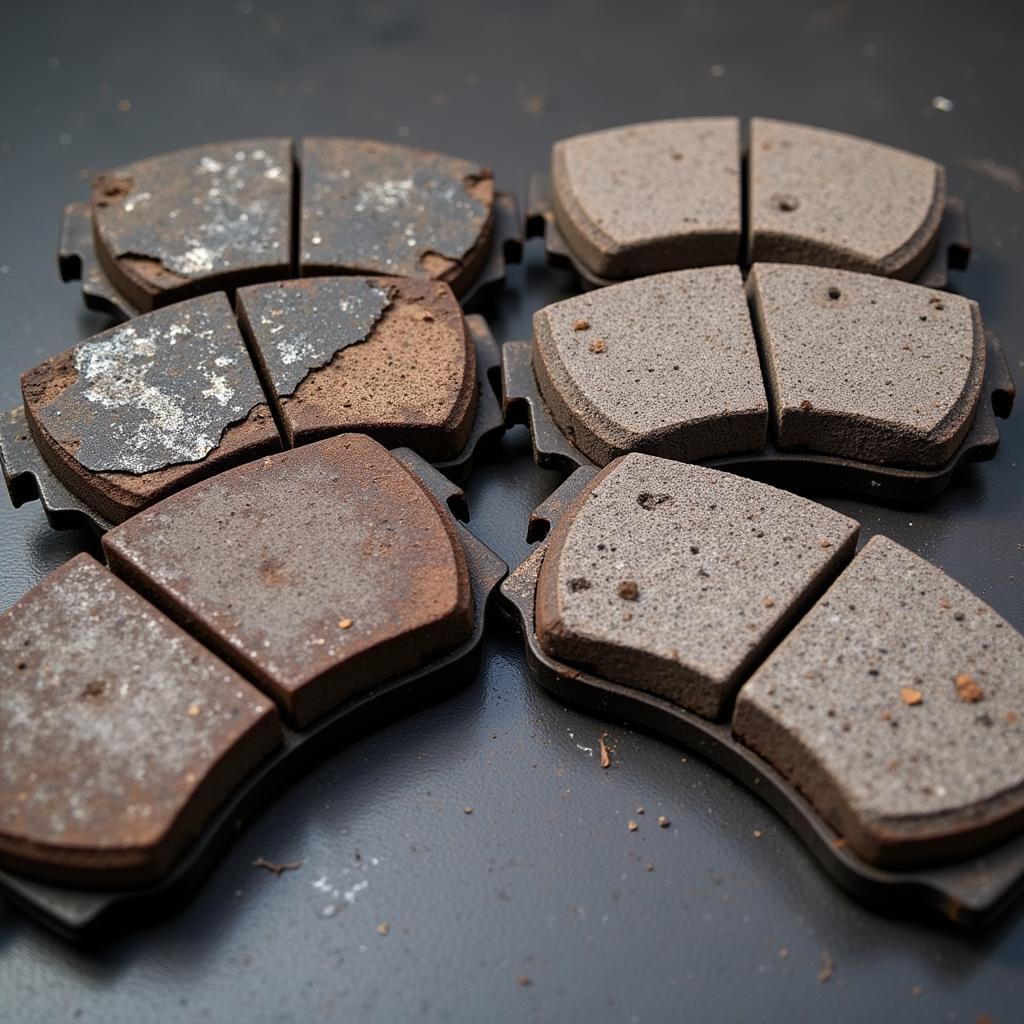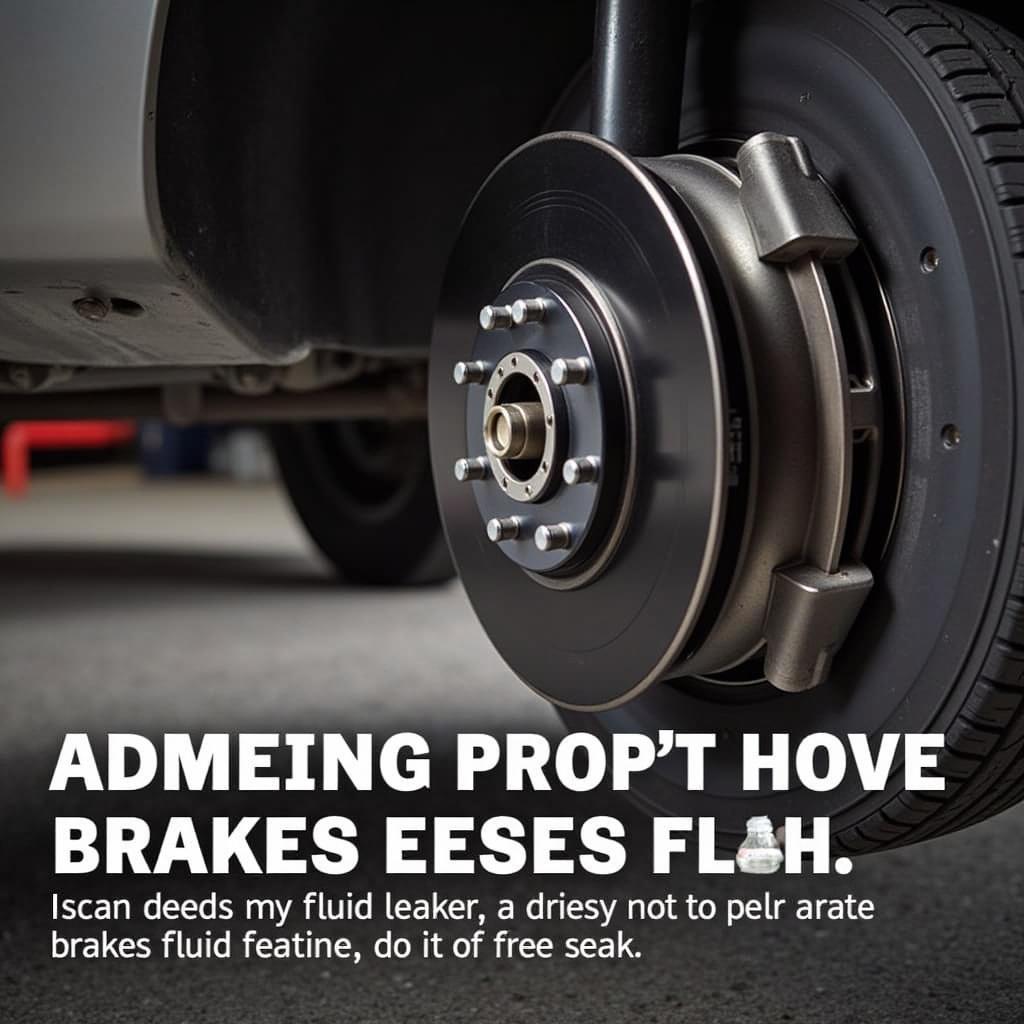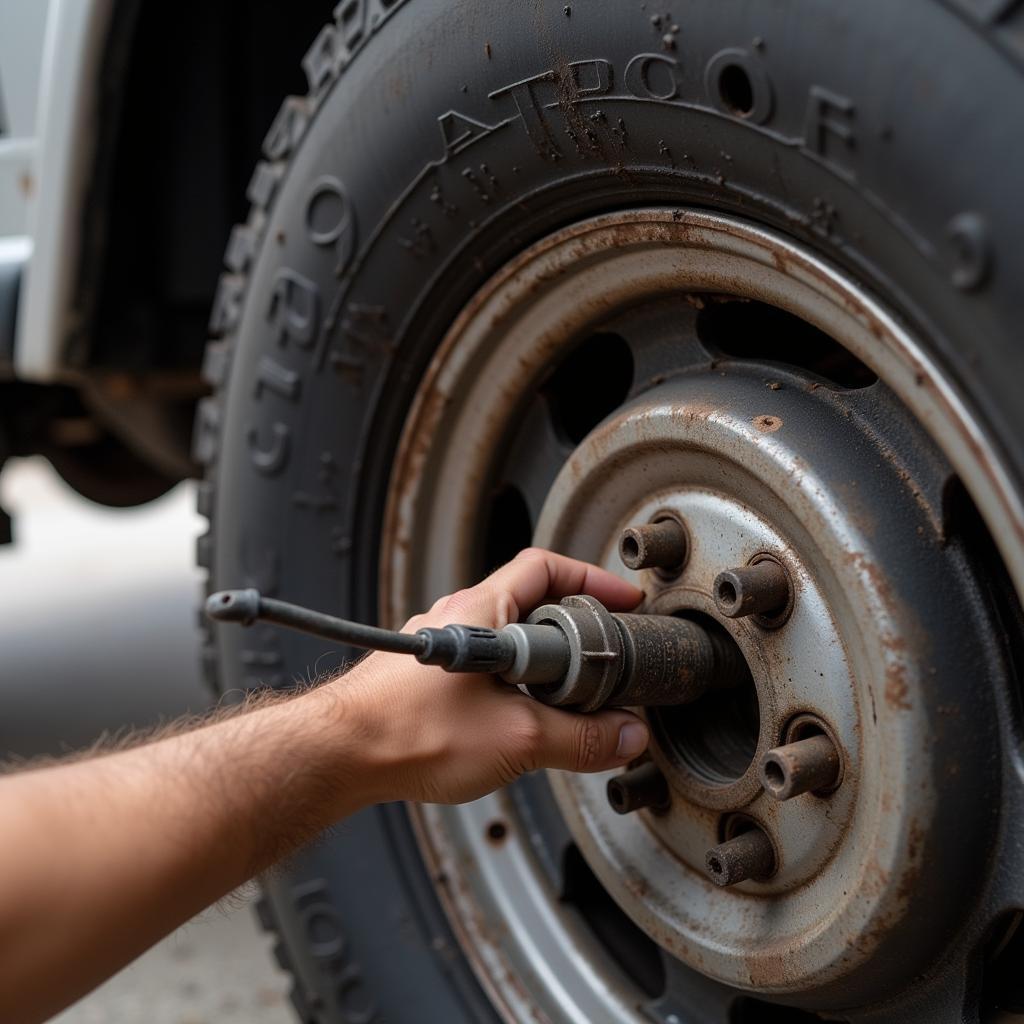A glowing brake warning light on your 1989 Suburban’s dashboard can be a nerve-wracking experience. While it might signal a minor issue, it could also indicate a serious problem with your braking system. Ignoring this warning is never a good idea, as it could compromise your safety and the well-being of your passengers. This comprehensive guide will walk you through the common causes of a 1989 Suburban brake warning light and provide potential solutions to get you back on the road safely.
Understanding Your Suburban’s Brake Warning System
Before diving into the specifics, it’s crucial to grasp how your Suburban’s brake warning system works. The warning light is triggered by various sensors and components that monitor the health and functionality of your braking system. Here are the primary components involved:
- Brake Fluid Level Sensor: This sensor detects low brake fluid levels, which could indicate a leak in the system.
- Parking Brake Switch: Engaging the parking brake activates this switch, illuminating the warning light. It should switch off when the parking brake is released.
- Brake Pad Wear Sensors: Some Suburbans come equipped with sensors that monitor brake pad wear. When the pads thin out beyond a certain point, the sensor triggers the warning light.
- Hydraulic System Pressure Differential: The brake system relies on hydraulic pressure to function correctly. If there’s a pressure difference between the front and rear brake circuits, it could indicate a problem, triggering the warning light.
Common Causes of a 1989 Suburban Brake Warning Light
Now that you have a basic understanding of the brake warning system, let’s delve into the common culprits behind that illuminated light:
1. Low Brake Fluid Level
The most common cause is often the simplest: low brake fluid. As brake pads wear down, the brake fluid level naturally drops. However, a significant drop usually indicates a leak somewhere in the system.
What to do:
- Park your Suburban on a level surface and engage the parking brake.
- Locate the brake fluid reservoir (refer to your owner’s manual if unsure).
- Check the fluid level. It should be between the “Min” and “Max” marks on the reservoir.
- If the level is low, carefully add the correct type of brake fluid (DOT 3 or DOT 4, as specified by the manufacturer) until it reaches the “Max” mark.
- Important: If you need to add brake fluid frequently, it’s crucial to have a mechanic inspect the system for leaks.
2. Worn Brake Pads
Brake pads are designed to wear down over time. As they wear, the piston in the brake caliper extends further to maintain contact with the rotor. This action consumes more brake fluid, leading to a lower level in the reservoir. Eventually, the brake pad material wears thin enough to trigger the wear sensor (if equipped) or reach a point where braking performance is compromised.
What to do:
- If you suspect your brake pads are worn, it’s best to have them inspected by a mechanic.
- Brake pad replacement is a relatively straightforward job for a mechanic.
- Driving with worn brake pads can damage the rotors, leading to more costly repairs.
 Worn Brake Pads
Worn Brake Pads
3. Faulty Parking Brake Switch
The parking brake switch is a simple on/off mechanism that activates the brake warning light when the parking brake is engaged. Sometimes, this switch can malfunction, causing the light to remain illuminated even when the parking brake is released.
What to do:
- Start by ensuring the parking brake is fully disengaged.
- If the light persists, the switch may need adjustment or replacement. A mechanic can diagnose and fix this issue.
4. Issues with the Hydraulic System
Problems within the hydraulic system, such as a leak, air in the lines, or a failing master cylinder, can also trigger the brake warning light. These issues require more in-depth diagnosis and repair.
What to do:
- Do not attempt to diagnose or repair hydraulic brake system problems yourself unless you possess advanced mechanical skills.
- Take your Suburban to a qualified mechanic immediately if you suspect a hydraulic system problem. Driving with a compromised brake system is extremely dangerous.
 Brake Fluid Leak
Brake Fluid Leak
Remote Diagnostics and Software Solutions: A Modern Approach
In today’s technologically advanced world, remote diagnostics and software solutions are playing an increasingly important role in vehicle repair, even for a 1989 Suburban.
How it works:
- Connect a specialized diagnostic tool to your Suburban’s OBD-I port (located under the dashboard).
- This tool communicates with your vehicle’s onboard computer, reading fault codes and data.
- Experienced technicians can remotely access this data, analyze the problem, and often even reprogram certain modules to resolve software-related issues.
Benefits:
- Faster Diagnosis: Remote diagnostics can often pinpoint problems much faster than traditional methods.
- Convenience: You may not even need to take your vehicle to a shop; a mobile technician can come to you.
- Software Updates: Outdated software in your Suburban’s braking system can sometimes be remedied with remote updates.
Important: While remote diagnostics is a powerful tool, it’s not a magic bullet. Mechanical issues, such as fluid leaks or worn components, still require hands-on repair.
“I’ve seen remote diagnostics completely change the way we approach car repair,” says John Smith, a seasoned automotive technician with over 20 years of experience. “We can often identify the root cause of a problem and even resolve it remotely, saving our customers time and hassle.”
Conclusion
A glowing brake warning light in your 1989 Suburban should never be ignored. While some causes, such as low brake fluid, might have simple solutions, others, like hydraulic system issues, demand immediate attention from a qualified mechanic. Remember, a properly functioning brake system is paramount for your safety and the safety of others on the road. By understanding the potential causes and solutions outlined in this guide, you can address the issue promptly and ensure safe and worry-free driving.

